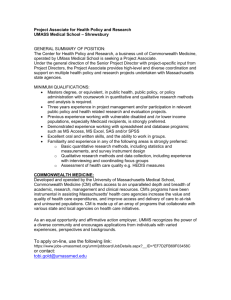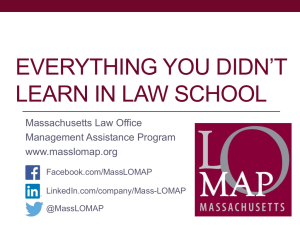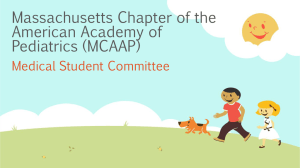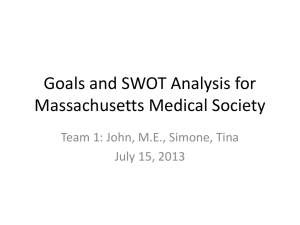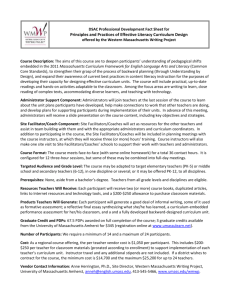Early College Programming Policy Questions
advertisement
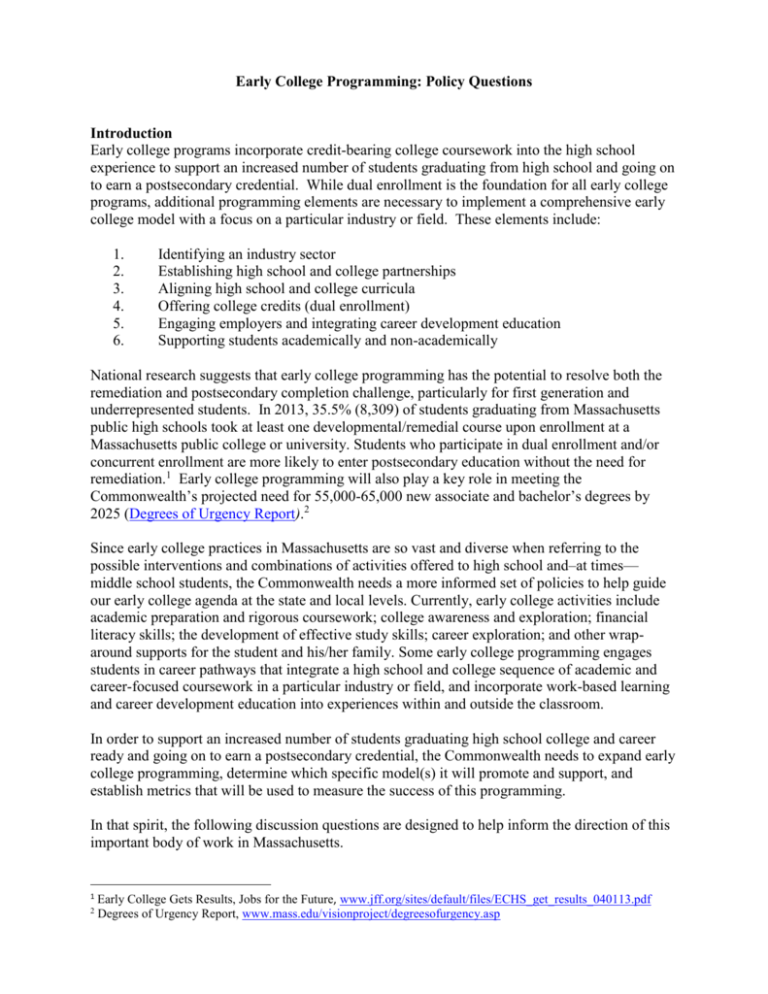
Early College Programming: Policy Questions Introduction Early college programs incorporate credit-bearing college coursework into the high school experience to support an increased number of students graduating from high school and going on to earn a postsecondary credential. While dual enrollment is the foundation for all early college programs, additional programming elements are necessary to implement a comprehensive early college model with a focus on a particular industry or field. These elements include: 1. 2. 3. 4. 5. 6. Identifying an industry sector Establishing high school and college partnerships Aligning high school and college curricula Offering college credits (dual enrollment) Engaging employers and integrating career development education Supporting students academically and non-academically National research suggests that early college programming has the potential to resolve both the remediation and postsecondary completion challenge, particularly for first generation and underrepresented students. In 2013, 35.5% (8,309) of students graduating from Massachusetts public high schools took at least one developmental/remedial course upon enrollment at a Massachusetts public college or university. Students who participate in dual enrollment and/or concurrent enrollment are more likely to enter postsecondary education without the need for remediation.1 Early college programming will also play a key role in meeting the Commonwealth’s projected need for 55,000-65,000 new associate and bachelor’s degrees by 2025 (Degrees of Urgency Report).2 Since early college practices in Massachusetts are so vast and diverse when referring to the possible interventions and combinations of activities offered to high school and–at times— middle school students, the Commonwealth needs a more informed set of policies to help guide our early college agenda at the state and local levels. Currently, early college activities include academic preparation and rigorous coursework; college awareness and exploration; financial literacy skills; the development of effective study skills; career exploration; and other wraparound supports for the student and his/her family. Some early college programming engages students in career pathways that integrate a high school and college sequence of academic and career-focused coursework in a particular industry or field, and incorporate work-based learning and career development education into experiences within and outside the classroom. In order to support an increased number of students graduating high school college and career ready and going on to earn a postsecondary credential, the Commonwealth needs to expand early college programming, determine which specific model(s) it will promote and support, and establish metrics that will be used to measure the success of this programming. In that spirit, the following discussion questions are designed to help inform the direction of this important body of work in Massachusetts. 1 2 Early College Gets Results, Jobs for the Future, www.jff.org/sites/default/files/ECHS_get_results_040113.pdf Degrees of Urgency Report, www.mass.edu/visionproject/degreesofurgency.asp Policy Questions for Discussion What are the goals of Massachusetts’ early college efforts? Metrics of success and program outcomes: o How will the following potential metrics be prioritized as indicators of success: the number of students enrolled, the number of college credits earned, the number of industry-aligned certificates attained, the number of students obtaining employment upon high school graduation, and/or the number of students who enroll in and/or complete an associate /bachelor’s degree? Program design: o Should Massachusetts focus on one particular model over another? The Massachusetts Landscape of Early College3 (enclosed; see page 5) describes the entire spectrum of early college models found throughout the Commonwealth. Should energy and resources focus on supporting existing programming, building new programs, or a mix of both? o Will the program design reinforce early college as a vehicle for students to start on their path to postsecondary education and to continue beyond the associate degree, thus meeting the need for baccalaureate degrees in the Commonwealth? Students served: o Early college programs in the Commonwealth serve a diverse student population. With significant opportunity gaps for our most underrepresented students and a growing need for supports, how will Massachusetts prioritize student population groups most in need of attention? Funding, capacity, and sustainability: o How will Massachusetts financially support new and/or sustain existing early college programming? How will ongoing resources be generated to ensure sustainability? o How can we leverage our existing resources to better provide early college opportunities for students? o Once early college programs are established, Massachusetts will need instructors who are qualified and who have the capacity to teach these courses. How will Massachusetts help to facilitate and support capacity building in this area? o Based on program priorities, what kind of guidance (e.g. design, funding, and/or outcomes metrics) will Massachusetts be able to provide to schools, districts, and colleges in order to meet the intended priorities of early college programming? Leadership and Coordination: o Early college programs require alignment and coordination of curriculum and resources across the secondary and post-secondary education sectors and the workforce system. Should a single state agency govern early college program development and delivery to facilitate seamless implementation 3 Massachusetts Landscape of Early College, www.doe.mass.edu/ccr/initiatives/EarlyCollegeDesignLandscape.pdf

